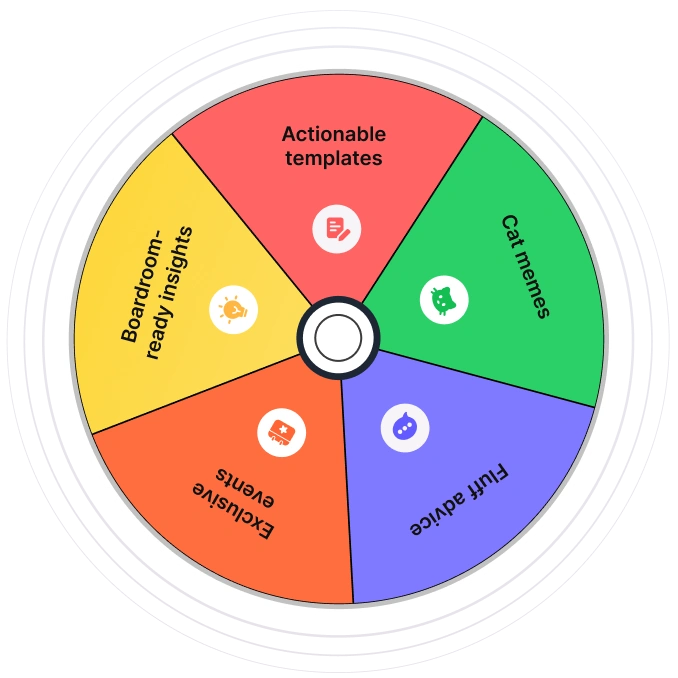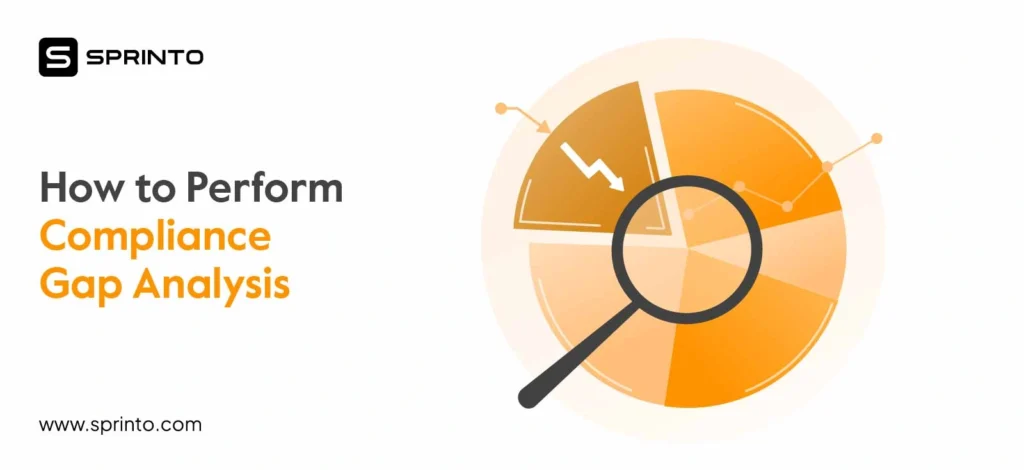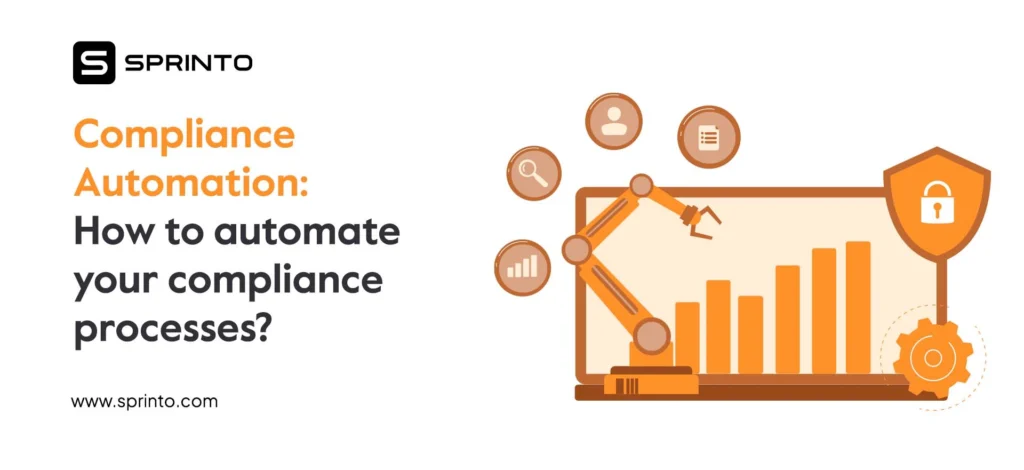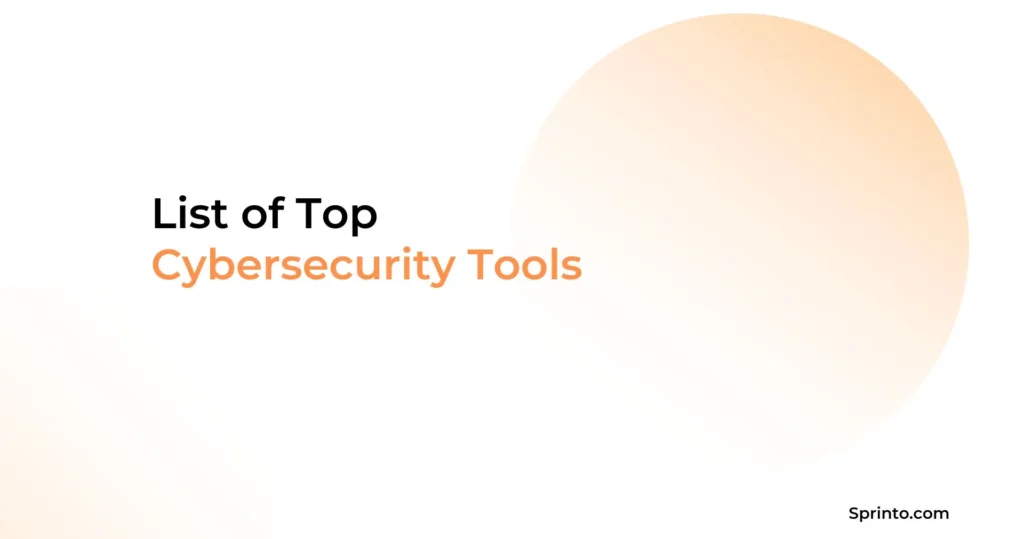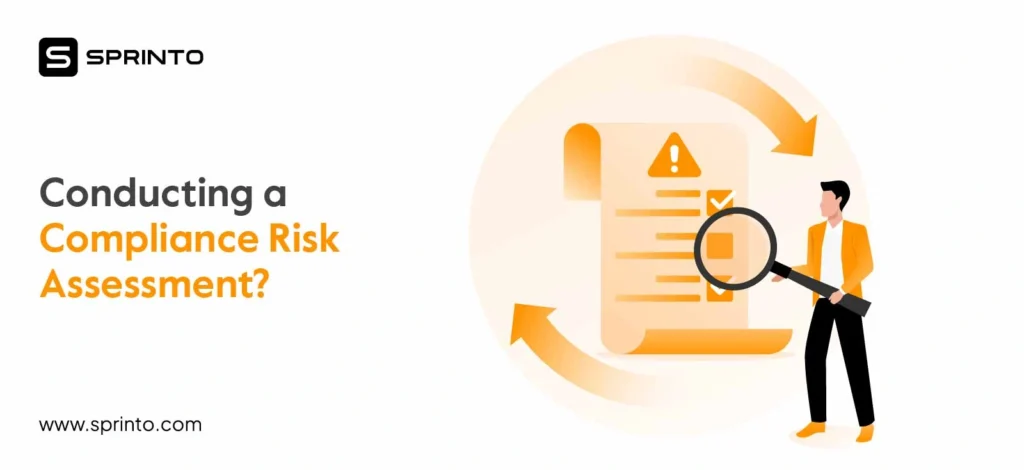![Best Compliance Management Tools [2025 Updated]](https://sprinto.com/wp-content/uploads/2025/07/Best-Compliance-Management-Tools-2025-Updated.png)
A recent US Chamber of Commerce report found that as many as 51 percent of US-based businesses struggle to meet their regulatory requirements. This, in turn, has stunted their growth. While the numbers are concerning, the statistics suggest that these businesses are vulnerable to regulatory fines, data breaches, and operational disruptions. It is here that a compliance-focused solution comes to the rescue.
Compliance management tools are best defined as software solutions that help organizations meet internal security, regulatory, and legal requirements. These tools automate each step and consequent substep of a compliance audit, reducing the time frame for conducting an audit from months to weeks.
- Compliance management tools automate monitoring, documenting, and managing compliance and are key to regulatory and financial security.
- Factors that differentiate one tool from another include scalability, integration capabilities, customization, flexibility, and user-friendliness.
- The best tools can cost anything between $5,000 and $40,000+, as the price depends on the organization’s size too.
Overview of Compliance Management Tools:
| Tool | Best For |
| Sprinto | Startups & Fast-growing SaaS |
| Vanta | End-to-end security automation |
| Scrut | Multi-framework compliance |
| LogicGate | Custom risk workflows |
| Hyperproof | Evidence freshness & integration |
| ZenGRC | Cross-framework mapping |
| AuditBoard | Enterprise-level compliance |
| Drata | Real-time compliance automation |
| Thoropass | Streamlined audits across frameworks |
| Scytale | Fast SOC 2/ISO 27001 readiness |
| Secureframe | Comprehensive compliance with integrations |
Get compliant faster with automation
Compliance Management Tools: Top Picks
Our Top Picks
#1: Sprinto
- Excellent support and a seamless experience
- Comes with pre-built security programs
- Provides continuous monitoring
Learn more. Book a demo.
#2: Scrut Automation
- Known for ease of use
#3: Drata
- Known for its support and deep IT ecosystem
How Did We Choose the Best Compliance Management Tool?
Buying a compliance management tool comes without a roadmap. Even seasoned B2B buyers struggle to look beyond price and the vendor’s reputation. So we decided to take on the challenge ourselves. We ranked 11 compliance management tools based on specific parameters, and here’s what we looked for in every tool:
#1: Integration capabilities
One of the key features of a compliance management tool is its ability to integrate with the existing systems and workflows. This existing system can be a customer management system (CRM), a human resource management system (HRMS), or an enterprise resource planning system (ERP), among others.
So, how can someone find if the software’s integrational abilities meet the requirements? Well, here’s our litmus test.
Litmus test: A product’s integration capability is often demonstrated by the smooth data flow between different systems. If done right, this reduces manual efforts and the risk of errors.
#2: Scalability
An organization’s compliance needs are closely associated with its growth. To meet evolving requirements and regulatory needs, you need a compliance management tool that scales with your business.
Litmus test: How does one find the right compliance management tool? Feed the platform with increasing volumes of data and observe if the software meets the expectations even with increasing load.
#3: Customization and flexibility
Every organization is different, and so are its compliance processes and requirements. Make sure to choose a vendor who offers customized solutions that is tailored to your workflows, forms, and reports.
Also read our guide on: How to Build a Compliance Management System
Litmus test: Flexibility in configuration ensures that the tool can adapt as per your organization’s structure and compliance strategy.
#4: User-friendliness
The usability of a compliance management tool is as crucial as its customization capabilities or efficiency. Features like dashboards, easy access to key product features, and other design elements can significantly enhance users’ experience and productivity.
Litmus test: Choose a platform that is intuitive and easy to navigate, with a user-friendly interface.
The 11 Best Compliance Management Tools
- Sprinto
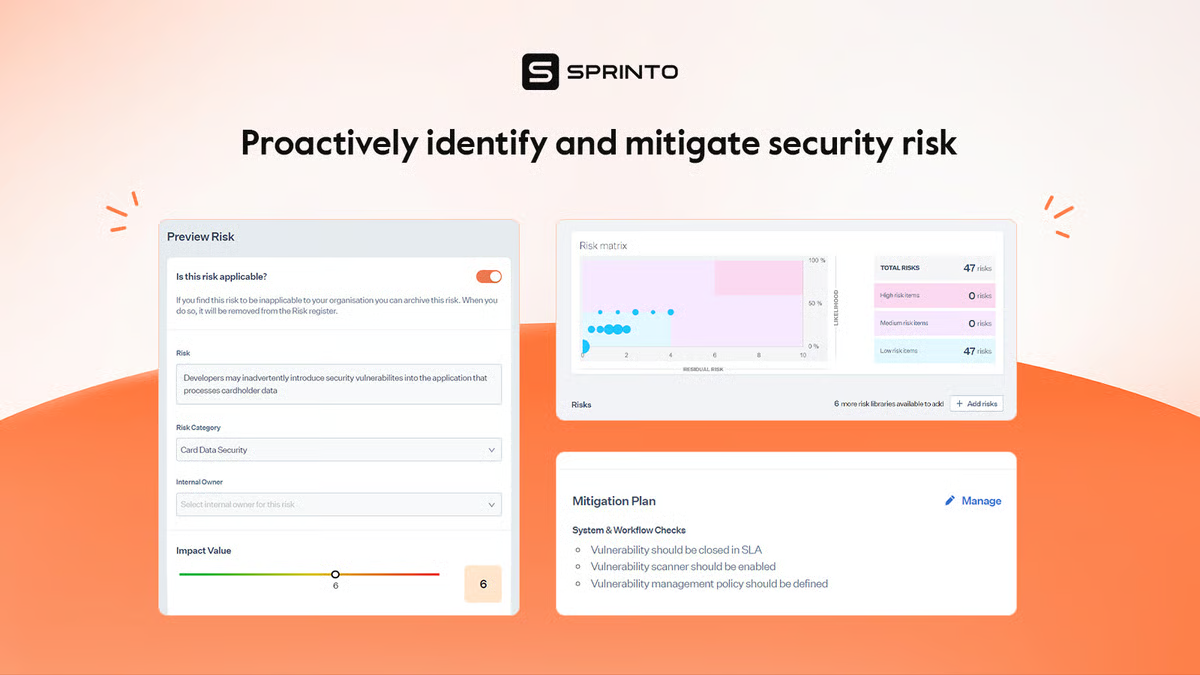
Source: G2
Sprinto – a fast-growing compliance management platform—is designed to offer out-of-the-box security programs and continuous control monitoring solutions. Sprinto aims to solve compliance and complete security audits for tech companies quickly and successfully. Here are some of its key features to look out for:
Key Features | Pre-built security program Sprinto offers out-of-the-box security templates tailored for startups and SaaS companies. These templates are designed with pre-mapped controls and checklists that meet framework-specific requirements (such as the SOC2 and GDPR), ultimately reducing time for setup from weeks to days. Automated compliance workflows Sprinto empowers businesses with automation, including automated task assignments, evidence requests, and escalations. It also ensures that every compliance responsibility has its owner and is executed within the stipulated time. Continuous control monitoring Once configured, Sprinto tracks the health and validity of all controls and can run 24/7. From last-minute security checkups to checking if admin accounts use MFA, Sprinto continuously validates controls and notifies you of gaps. |
Pros | User-friendly Excels in customer support Known for excellent and effective compliance management solutions |
Cons | Occasional bugs |
- Vanta
Vanta offers automatic security monitoring and evidence collection systems. It helps companies achieve and maintain compliance standards such as SOC 2, ISO 27001, HIPAA, and GDPR. Some of the leading features of Vanta are as follows:
Features | Policy management One of Vanta’s key offerings is policy management: its ability to provide customizable, audit-ready templates for security, operational policies, and human resources. This allows companies to implement frameworks like SOC 2 or ISO 27001 without starting from scratch. Automated evidence collection Most software asks users to search for screenshots or logs when collecting evidence. However, Vanta collects audit evidence like access controls, password policies, and encryption status directly from the tech stack. This data is collected as evidence and shared in auditor-friendly formats. |
Pros | Easy to implement Strong customer support User-friendly UI/UX |
Cons | It may come across as expensive to small startups Limited customizations for complex workflows |
- Scrut Automation
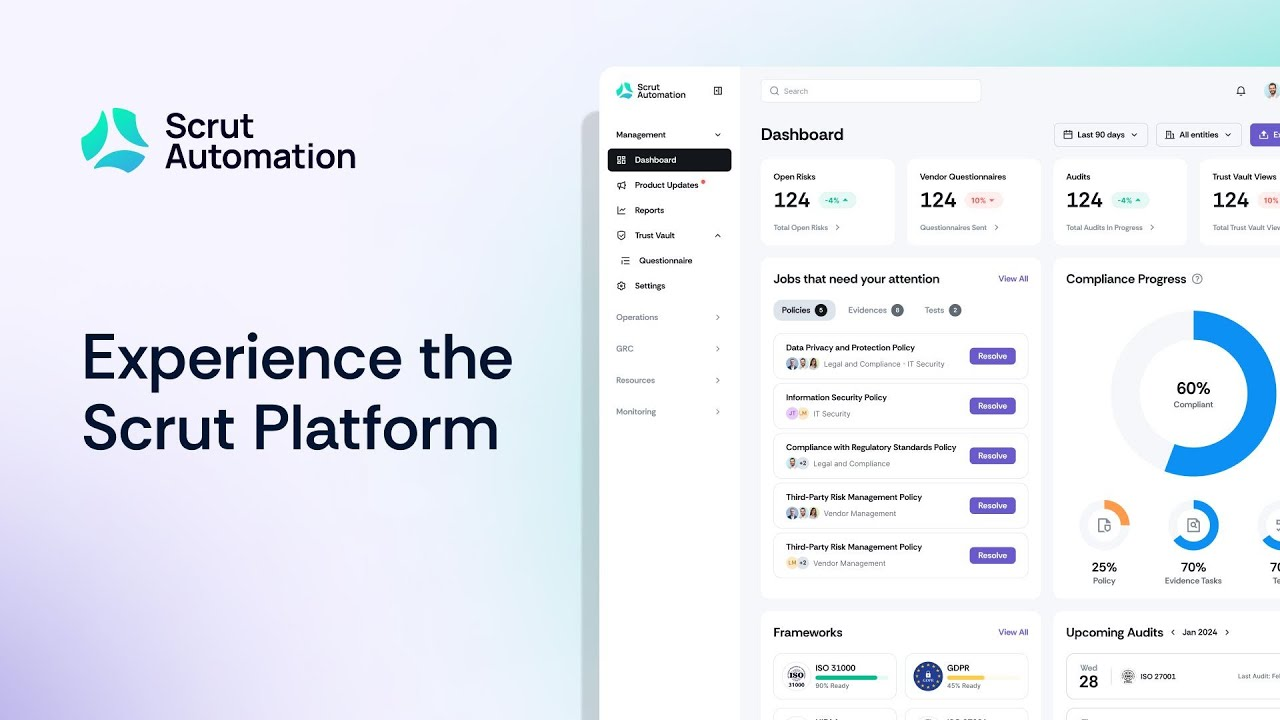
Source: G2
Scrut Automation offers a comprehensive platform for managing multiple compliance frameworks, including SOC2, HIPAA, and ISO 27001. It also supports automation in evidence collection and audit workflows.
Features | Risk tracking Scrut allows you to define, assess, and monitor organizational risks with qualitative and quantitative metrics. It also enables you to track remediation efforts, assign ownership, and visualize risks across departments with real-time dashboards. Multi-framework support Scrut supports multiple frameworks (an incredible feat in itself) at the same time. These frameworks include SOC 2, ISO 27001, GDPR, HIPAA, and PCI DSS, among others. It also maps standard controls across frameworks so that no one gets a chance to duplicate efforts during audits or evidence collection. |
Pros | Scales as per the organizational needs Simplifies complex compliance processes Offers a centralized dashboard to monitor all compliance activities |
Cons | Initial setups are complicated and time-consuming It may come with bugs |
- LogicGate Risk Cloud
LogicGate Risk Cloud is a scalable, no-code GRC platform that enables businesses to develop and communicate risk strategies effectively.
Features | Customizable Risk Workflows LogicGate makes compliance easy with its customizable risk workflows. The software allows companies to build tailored workflows using a no-code, drag-and-drop interface. Anyone can define trigger conditions, approval hierarchies, and escalations with the following feature. Third-Party Risk Management The platform is also popular for its streamlined onboarding, assessments, and continuous monitoring of vendors. The tools automate risk scoring and highlight suppliers that require follow-up, thus giving transparency. |
Pros | Highly customizable User-friendly interface Strong 3rd party risk management |
Cons | Application creation can prove to be counterintuitive Some features may require extensive customization |
- Hyperproof
Hyperproof eliminates manual tracking with its tech stack that automates evidence collection, tracks control effectiveness, and manages multiple frameworks in one place. Whether you pursue SOC 2, ISO 27001, or any other requirement, Hyperproof excels at all.
Key Features | Automated evidence collection Hyperproof integrates with over 100 tools (including Slack, AWS, and Google Cloud) and can extract compliance data directly from source systems. This eliminates the need for screenshots and manual exports. Unique “freshness” standard application Hyperproof tags every piece of evidence with a “freshness” score that shares its current state, whether stale or expired. This mechanism ensures you submit only valid, audit-worthy evidence without scrambling at the last minute. |
Pros | Easy to set up Needs minimal configuration Automates evidence collection effectively Supports multiple compliance frameworks |
Cons | A few features are still under development Supports a few customization options |

Source: G2
- ZenGRC
ZenGRC is a cloud-based SaaS solution that enhances a company’s risk and compliance programs. The software supports continuous monitoring and customizable audit management capabilities.
Key features | Mapping between frameworks, programs, and risks ZenGRC generates a unique, visual, and easy-to-navigate relationship map that connects controls across frameworks, thus highlighting overlapping areas in the process. This allows business owners to see how a control in SOC 2 may also satisfy ISO 27001 or GDPR. Continuous monitoring With robust integration abilities, ZenGRC continually tracks risk signals, including system access, control performance, and patch updates. The system triggers alerts before they escalate into compliance violations. |
Pros | Ease mapping between various compliance elements Features a strong onboarding program Provides insights on the impacts of changes |
Cons | The user interface can be improved Report extracts need improvements |
- AuditBoard
AuditBoard is a connected risk platform that helps businesses centralize an organization’s risks, controls, policies, and frameworks. It goes one step forward by enabling businesses to leverage risk as a strategic growth driver.
Key Features | Centralized risk and compliance management AuditBoard bundles enterprise risks, controls, policies, and evidence in a single platform. The platform helps you track status updates, framework progress, and accountability across departments and entities. Automated workflow management AuditBoard offers prebuilt and customized workflows for risk assessments, policy approvals, remediation plans, and control testing. This allows businesses to maintain consistency and manually remove bottlenecks. |
Pros | Strong integration capabilitiesEffective audit management featuresUser-friendly interface |
Cons | Steep learning curve for new usersLimited customization in reporting |
- Drata
Drata, a leading security and compliance tool, continuously monitors and collects evidence of a company’s security controls. Drata is also known for its advanced features in streamlining workflows that ensure its audit-readiness.
Key Features | Real-time monitoring: Real-time monitoring tracks the security states, evidence, and policies concerned across the ongoing compliance practices. Seamless integration Drata intuitively connects with various tools and services and can automate evidence collection and compliance processes. |
Pros | Enhanced real-time visibility into compliance and security statusKnown for its effective and efficient management features |
Cons | High price pointComplex to set upHas limited customization options |

Source: G2
- Thoropass
Thoropass is best known as an all-in-one platform that combines audit and assessment with compliance automation. The tool streamlines compliance and accelerates audits for HIPAA, SOC, PCI DSS, HITRUST, and ISO 27001, among others.
Features | Automated compliance workflowsThoropass simplifies the process of achieving and maintaining compliance through automation. Customizable policies and frameworks Offers flexibility that adapts to requirements. |
Pros | Simplifies vendor risk management and third-party assessments Enables real-time risk monitoring systems for proactive security |
Cons | Has a steep learning curve Integration setup may take time, depending on existing security tools |
- Scytale
Scytale is categorized as an InfoSec compliance automation and expert advisory solution designed to provide everything a user needs to become audit-ready. The platform provides security awareness training, risk management, an audit hub, and many other solutions that tackle compliance issues.
Features | Automated evidence collection reduces the manual documentation task, thus improving its speed substantially. Centralized compliance management features bring all compliance requirements into a single hub, thus eliminating the need for multiple tools. |
Pros | Intuitive interface simplifies compliance management Provides robust automation tools that reduce manual efforts and minimize errors that may arise in the process. |
Cons | Provides limited customization options for specific compliance needs Few users won’t recommend it to startups |
- Secureframe
Secureframe provides a seamless way to manage and automate compliance processes, saving significant time and effort. The intuitive interface, robust integrations with tools like AWS and Google Workplace, and the guidance for SOC2 and ISO PCI-DSS audits make it invaluable.
Features | Continuous monitoring offers real-time monitoring of systems that work around the clock. The automated evidence collection system simplifies audit evidence collection with the help of integrations. |
Pros | Seamless user experience Provides robust integration capabilities across compliance processes Great customer support |
Cons | Some features are more suited to specific compliance frameworks instead of being universal Limited customization options for specific organizational needs |
What Is A Compliance Management Tool?
A compliance management tool is software that helps businesses ensure they are legally compliant, i.e., the company follows internal policies, industry regulations, and other legal requirements. This tool centralizes all the essential compliance-oriented activities, such as audits, risk assessments, policy training, and documentation, into one system to reduce errors, avoid penalties, and improve transparency.
How does a compliance management tool work?
Most compliance management tools work in the following order:
- First, the tool maps the regulations to company policies.
- Next, it tracks compliance tasks and deadlines.
- The tool then stores and manages the policy documents in one place.
- After a thorough audit, it sends alerts and reminders for pending compliance activities.
- All the activities are monitored through a centralized dashboard
- Finally, the audits are automated and risk assessed to avoid penalties (if incurred) in the future.
What are the benefits of a compliance management tool?
Apart from the automation of repetitive tasks, a compliance management tool benefits by reducing risks of non-compliance and centralizing documentation, which makes it easier to access and audit. The tool also ensures accountability as tasks are tracked and assigned to specific individuals.
Get compliant faster with automation
How much does a compliance management tool cost?
The cost of a compliance management tool can vary significantly. Here are some of the ways to look at it:
- Subscription-based models: $50 to $500 per month for small businesses
- Enterprise solutions: From $10,000 to $100,000+ annually, depending on customization, integrations, and users
- Pay-per-user models: $20 to $100 per user per month
Frequently Asked Questions (FAQs)
- Do small businesses need a compliance management tool?
Yes! Compliance management tools help businesses reduce manual work and ensure they meet basic regulatory requirements without hiring an entire team.
- Do only tech companies need a compliance management tool?
No. Most modern tools offer industry-specific templates and compliance modules (e.g., for healthcare, finance, or manufacturing). This ensures companies, irrespective of industry, stay aligned with regulatory standards.
- How long does it take to implement a compliance management tool?
Implementing a tool depends on the vendor and can take a few days to weeks.
Raynah
Raynah is a content strategist at Sprinto, where she crafts stories that simplify compliance for modern businesses. Over the past two years, she’s worked across formats and functions to make security and compliance feel a little less complicated and a little more business-aligned.
Explore more
research & insights curated to help you earn a seat at the table.





